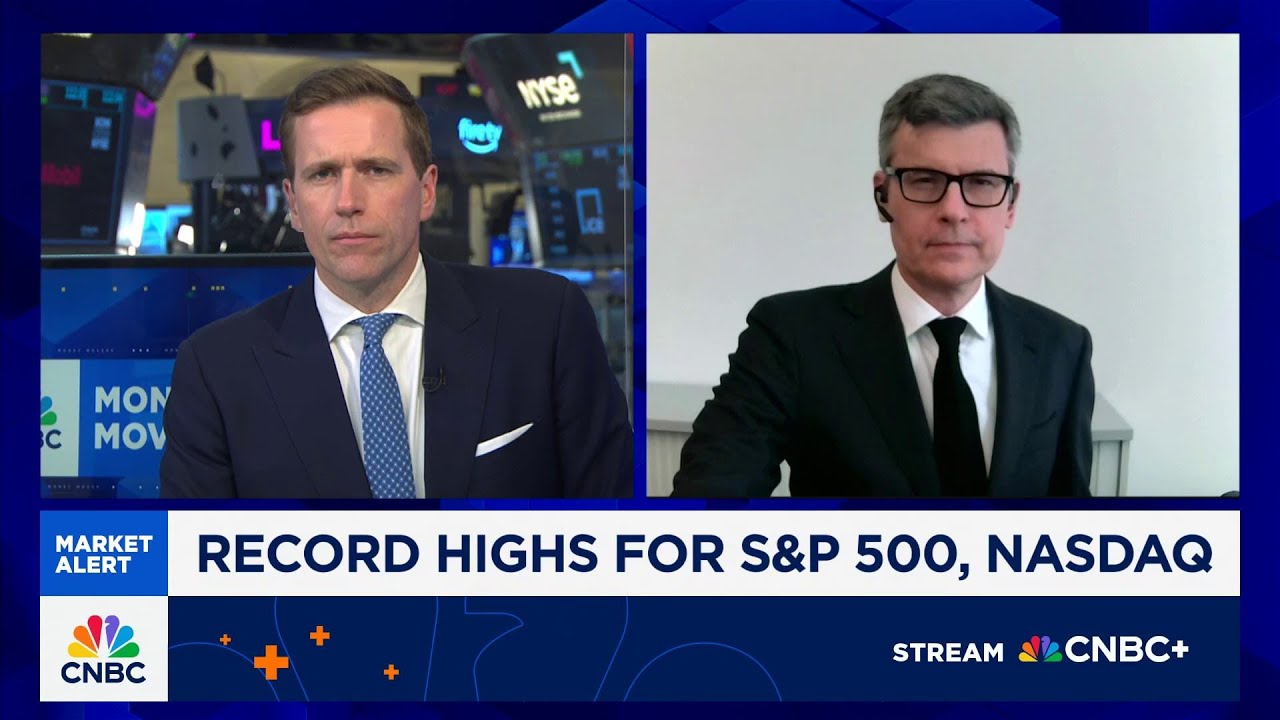UBS Global Wealth Management CIO Mark Haefele maintains a cautiously optimistic stock market outlook, highlighting potential upside from strength in AI, power, and resources sectors despite limited rate cuts and ongoing economic uncertainties. He also notes the market’s resilience amid tariff concerns, the importance of the recently passed fiscal bill, and favors US and emerging markets over Europe, while viewing bond market volatility as a buying opportunity.
In the discussion with UBS Global Wealth Management CIO Mark Haefele, the outlook for the stock market remains cautiously optimistic despite expectations of only one or two rate cuts this year. Haefele does not view the limited rate cuts as bearish for stocks, highlighting positive developments such as a resolution on near-term oil prices and the passage of a significant fiscal bill, which he refers to as the “one big beautiful bill.” While the US market is expected to end the year around current levels, there is potential upside driven by continued strength in artificial intelligence (AI), power, and resources sectors.
Regarding the fiscal bill, Haefele notes that its passage is largely priced into the market, but failure to pass it would be a significant negative due to the removal of expected stimulus. The bill is mildly stimulative in the near term and has eliminated some negative provisions. On the trade front, he suggests that the anticipated tariff increases scheduled for July 9th may be less severe than initially feared, with tariffs potentially leveling out around 15%, which is more moderate than some earlier expectations.
Haefele also comments on the market’s resilience to tariffs, noting that despite the “wall of worry,” the market has rebounded sharply from recent lows. However, he points out that currency fluctuations, such as the US dollar’s 12% decline against the Swiss franc, are impacting foreign investors who face losses on their US stock holdings when converted back to their home currencies. This dynamic is important to monitor as it influences foreign investment flows into the US market.
On the bond market, Haefele appreciates the recent volatility, viewing it as an opportunity to buy on yield spikes and sell when yields fall. He remains confident that inflation will subside by the end of the year, which could lead to lower interest rates in the US. This outlook supports a cautious but constructive stance on bonds amid ongoing economic uncertainties and high debt levels.
For sector and regional preferences, Haefele emphasizes a long-term focus on stocks related to AI and power consumption, sectors he believes are still in the early stages of growth. Geographically, he favors the US and emerging markets over Europe, which has already experienced a strong rally in the first half of the year. For investors considering short-term moves, he suggests taking profits in European markets first, given their recent significant gains.
